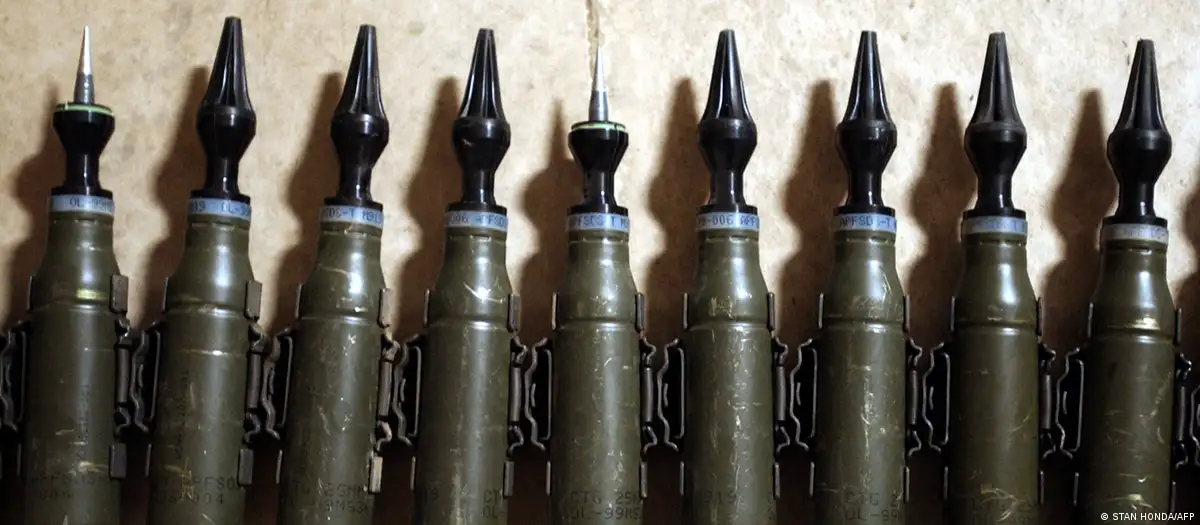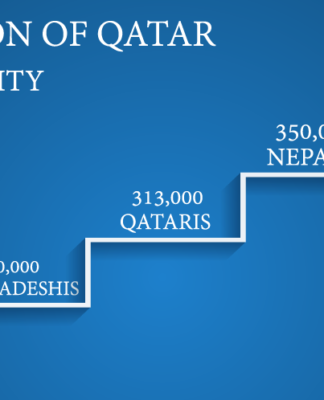POLITICSUKRAINE
Ukraine: Why is uranium ammunition so controversial?
Thomas Latschan
7 hours ago7 hours ago
The US has announced it will supply Ukraine with uranium anti-tank rounds. Russia says these are “inhumane.” Experts say the hazards for health and the environment have yet to be clarified.
https://p.dw.com/p/4W5Ks
Several rounds of depleted uranium ammunition
Uranium munitions are particularly perniciousImage: STAN HONDA/AFP
The US had already promised Ukraine 31 Abrams tanks in January. Now, the Pentagon also wants to supply suitable ammunition with higher impact. A new $175 million arms package, which includes 120mm depleted uranium anti-tank rounds, is being planned.
What are uranium munitions?
Depleted uranium munitions are largely made from the radioactive waste that arises as a byproduct of the process used to create enriched uranium, during which natural uranium is separated into two parts. While enriched uranium has a higher proportion of the isotope U-235 and can be used for nuclear power plants or to produce atomic weapons, the depleted uranium, which has a higher concentration of the isotope U-238 and is less radioactive, can be used to produce ammunition. To do this, it is mixed with other metals such as titanium or molybdenum and protected from corrosion by a thin coating of another metal.
The slight radioactive nature of the depleted uranium does not provide any additional military benefit, but its dense quality means that it can be used to make particularly penetrative projectiles that are so hard they can penetrate an armored tank’s outer layer. Moreover, they are designed in such a pernicious way that even if they are deformed by the impact with a vehicle, the tip remains. It proceeds to melt and releases hot uranium dust that ignites spontaneously on coming into contact with oxygen inside a tank, burning all crew members live. An additional explosion can occur if the vehicle is carrying ammunition or fuel.
A burnt Russian tank near KyivA burnt Russian tank near Kyiv
A burnt Russian tank near Kyiv: Uranium ammunitions could be used to destroy tanks.Image: Genya Savilov/AFP/Getty Images
US admits use of uranium munitions in Iraq, Afghanistan, Yugoslavia and Syria
During the Second World War, the German army conducted experiments with uranium projectiles but did not use them because uranium was too expensive and scarce. Today, 21 countries, including the US, Russia, Turkey and Saudi Arabia, are known to have this type of ammunition in their arsenals. However, only the US has admitted to using them, in military operations in Iraq, former Yugoslavia, Afghanistan and Syria. During the 2003 Iraq war alone, hundreds of tons of uranium munitions were fired.
The use of chemical warfare agents, anti-personnel mines or uranium munitions is not banned by international law, as opposed to the use of biological weapons. There is also no international treaty that explicitly bans the use of depleted uranium. However, experts warn of the possible long-term consequences of uranium being released in large quantities.
A hand with a shell containing depleted uranium A hand with a shell containing depleted uranium
Uranium munitions were used in former Yugoslavia in 1995Image: Hidajet Delic/AP/picture alliance
Potential impact of radiation?
Depleted uranium does not directly irradiate people in its vicinity: Its radioactivity is about 40% weaker than that of natural uranium, and generally cannot penetrate skin and clothing. At a distance of one meter (roughly 3 feet), one kilogram (2.2 pounds) of depleted uranium produces an annual radiation dose equivalent to about one-third of natural radiation exposure.
Nevertheless, at a short distance and over a long period of time such radiation can harm genetic material and cause cancer. Even more dangerous is the fact that people might ingest uranium dust through their respiratory tract, food or wounds. Like other heavy metals, uranium is toxic and can cause severe damage to internal organs.
Long-term impact?
Experts disagree on how dangerous the long-term consequences for humans and the environment actually are. According to a report by the International Physicians for the Prevention of Nuclear War (IPPNW), there has been a marked increase in deformities, cancers and other consequential damage in the regions of Iraq where uranium munitions were used on a massive scale.
Ukrainians fighting war with Soviet-era tanks
04:31
However, the World Health Organization (WHO) and the International Atomic Energy Agency (IAEA) say there is no particular risk to the civilian population from uranium munitions. A 2010 report commissioned by the European Commission found “no evidence of environmental and health risks” from depleted uranium.
It is also unclear how much damage can be done to soil and groundwater. Uranium is highly susceptible to corrosion; within five to 10 years, unexploded munitions can rust through into soil and release uranium into groundwater. Several studies in areas where such munitions have been used have so far only found slightly higher concentrations of uranium in groundwater, but there are no reliable long-term studies yet. These are necessary, given that U-238 has a half-life of 4.5 million years.
‘Clear sign of inhumanity’
Russia has strongly condemned the US’ planned delivery of uranium tank ammunition to Ukraine. The Russian Embassy in Washington said it was a “clear sign of inhumanity,” while Kremlin spokesman Dmitry Peskov warned of an increase in cancer rates and other diseases in Ukraine, saying that the responsibility lay entirely with the US government.
The US is not the first state to supply uranium munitions to Ukraine. In March, Britain agreed to provide uranium rounds for the Challenger 2 main battle tanks it had promised previously. Moscow also reacted angrily then.
This article was translated from German.
























![Qatar Labor Law In 2020??? [UPDATES]](https://welcomeqatar.com/wp-content/uploads/2020/12/Qatar-Labor-Law-1-696x366-1-324x366.jpg)





